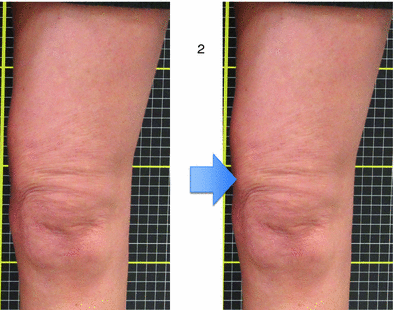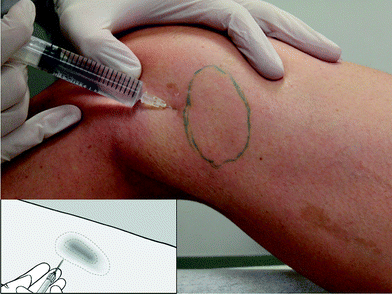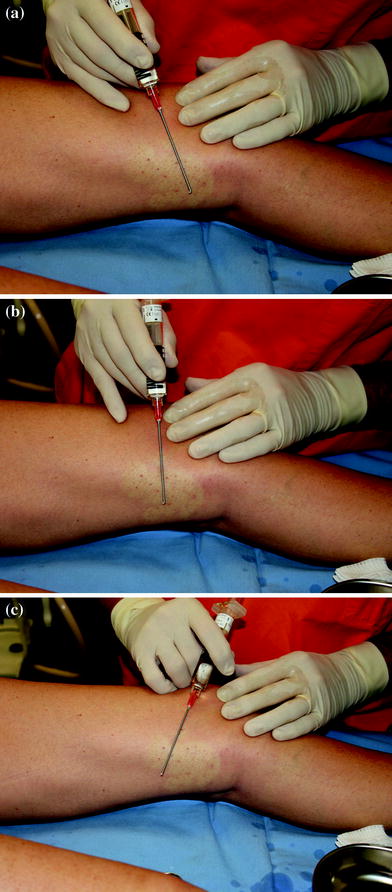Fig. 19.1
Materials: 18 G blunt tip cannule, 9 cm length is used to easly approach smaller areas
Number 11 blade
Sharp scissors
1.2 × 70 mm—18G filling cannula
Anesthetic solution is prepared by mixing 6.4 cc of physiologic solution with 3.6 cc of Mepivacaine (20 mg/ml) with adrenaline (1/100,000)
6 × 75 mm sterile adhesive cutaneous suture (Steri-Strip 3 M).
19.1.5 Methods
The treatment is described in Figs. 19.2, 19.3, 19.4, 19.5, 19.6, 19.7, 19.8, 19.9, 19.10, 19.11, 19.12, 19.13, 19.14.








Fig. 19.2
47-year-old female with surgical scar 24 months after liposuction. The arrow shows the loss of volume

Fig. 19.3
The area of interest is designed and 5 cc of local anesthesia is injected into the subcutaneous space. After injection of local anesthesia, is very difficult to understand where is the scar and where ends the area of treatment. For this reason, the pre-treatment evaluation and design are the most important and difficult step of the scar correction

Fig. 19.4
a–c The procedure is demonstrated
Stay updated, free articles. Join our Telegram channel

Full access? Get Clinical Tree








